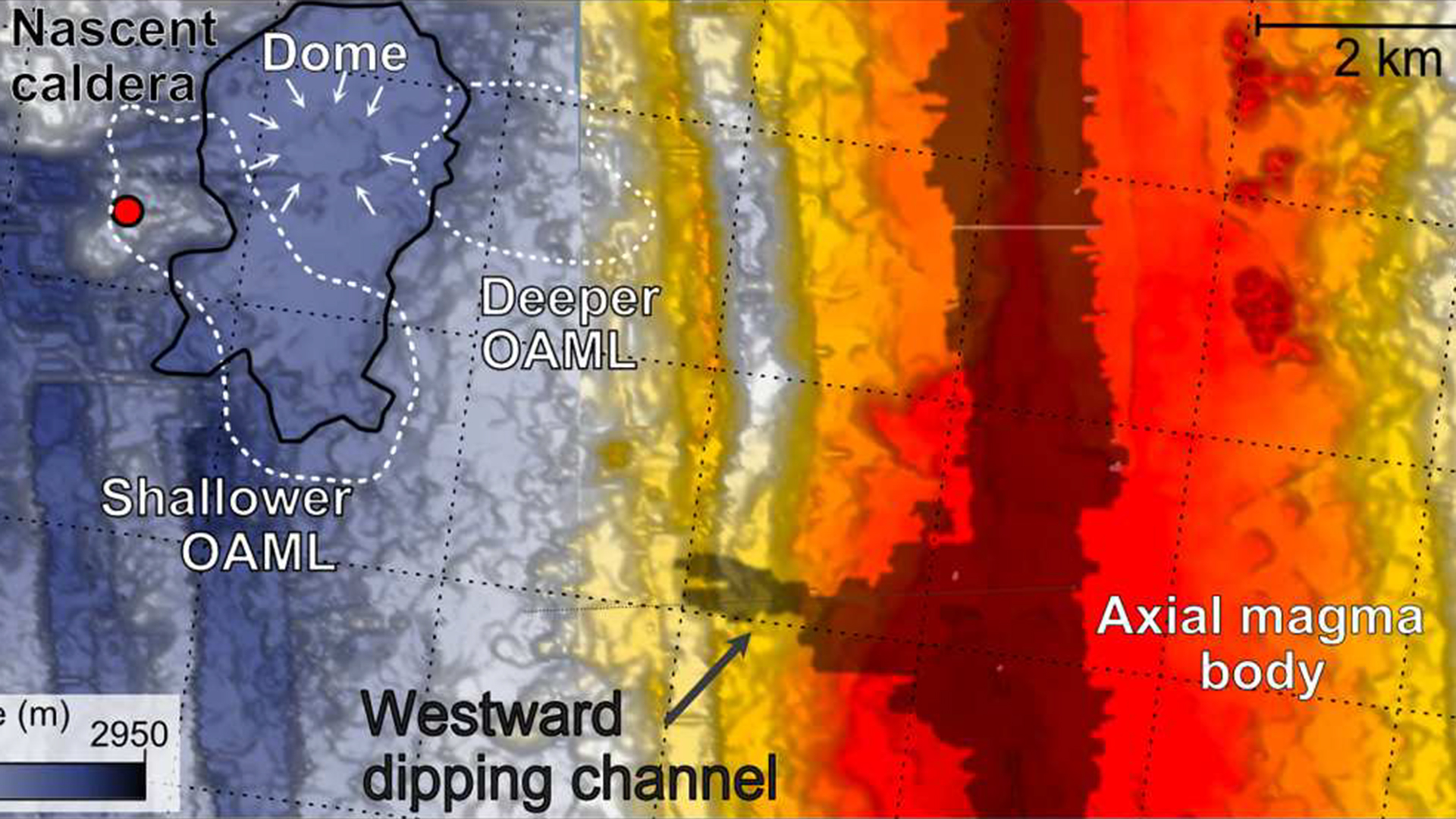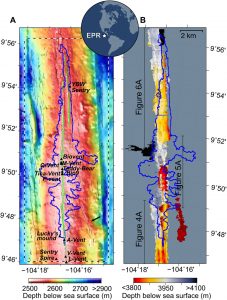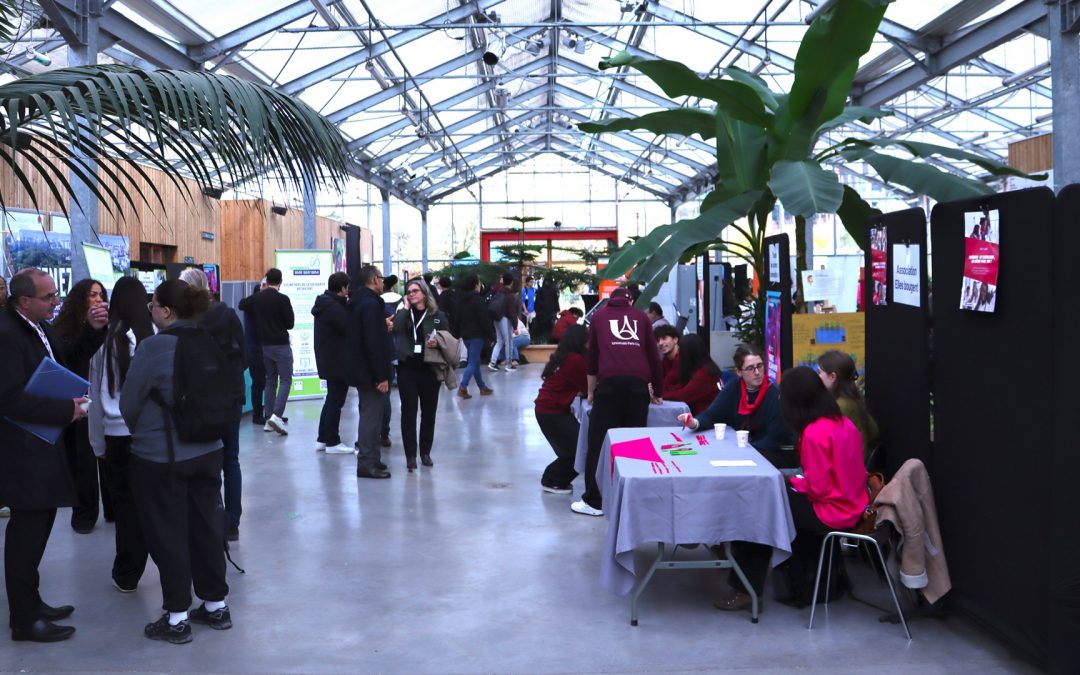By imaging for the first time at high resolution and in 3D the magmatic system under the East Pacific Ridge, an international team led by Milena Marjanović, CNRS researcher at the Institut de Physique du Globe de Paris, sheds light on the morphology of the magma lenses representing the last stages of magma before eruptions of lava on the surface.
The study, published on September 29 in the journal Science Advances, shows that the shape of these small magma reservoirs remembers the processes of magma recharge and drain, influencing the dynamics of future eruptions.

© Marjanovic – CNRS-IPGP
Numerical modeling results show that the architecture of magma plumbing systems between the Earth’s mantle and surface and how magma evolves through these systems play a fundamental role in the construction and evolution of volcanic edifices. However, due to the inaccessibility of most active volcanic systems to high-resolution imaging, the detailed morphology of the most superficial magma reservoirs and the relationship between magma upwelling initiation and eruption dynamics still need to be discovered.

Topography and tectonics of the ocean floor (left) and 3D morphology of magmatic lenses beneath the surface (right) of a segment at the East Pacific Rise. © Marjanovic – CNRS – IPGP
A study published on September 29 in Science Advances by an international team involving scientists from the CNRS, the Institut de Physique du Globe de Paris and Université Paris Cité presents unprecedented high-resolution seismic images that shed light on the small-scale architecture of the network of shallowest magma bodies, located beneath an erupting zone of the East Pacific Rise. These images, the result of a close collaboration with industry experts, which enabled a cutting-edge imaging technique, were obtained by inverting the waveforms of seismic reflection data acquired during a marine research cruise conducted in 2008.
The study reveals that these lenses, which were until now modeled as smooth bodies, in reality present ridges and troughs which are interpreted as zones where repeat dikes (seams of magma which rise from the reservoir up to the surface) nucleate. This peculiar morphology is sculpted by the processes of magma recharge from the mantle and magma extraction towards the surface. The recurrence of these processes leaves an imprint, linked to the concentration of stresses induced by the topography, which contributes to the nucleation of the dikes and the triggering of the rise of magma towards the surface and more broadly to the dynamics of subsequent eruptions.
By including these new results in the latest generation of three-dimensional numerical models, it should now be possible to obtain a more realistic representation of volcanic systems which will contribute to better localization of eruptions, and thus to the improvement of risk assessment.
References:
> Insights into dike nucleation and eruption dynamics from high-resolution seismic imaging of magmatic system at the East Pacific Rise, Marjanović et al., Sci. Adv. 9, 2023.
À lire aussi

Succès confirmé pour la 3ᵉ édition du Forum des carrières scientifiques et des métiers de la santé
Plus de 1 700 visiteurs en deux jours pour la 3ᵉ édition du forum organisé par la Ville de Saint-Ouen, l’Université Paris Cité et l’AP-HP. Les 7 et 8 novembre, la Serre Wangari a accueilli collégiens, lycéens et familles venus découvrir la diversité des métiers de la...
read more![[Bottom-up calls for projects – Circle U.] Internationalise your courses and missions at UPCité!](https://www-test.u-pariscite.fr/wp-content/uploads/2025/10/Bottom-up-UPCITE-1080x675.png)
[Bottom-up calls for projects – Circle U.] Internationalise your courses and missions at UPCité!
Université Paris Cité wishes to support the investment of its administrative staff and academics in Circle U.the European alliance. How? By funding up to 5,000€ projects such as organising international conferences, staff weeks, translating documents to propose...
read more
Université Paris Cité on the path to internationalising its programmes
L'Université Paris Cité is committed to internationalising part of its study programmes and supporting academic staff who wish to be part of this initiative. In order to provide them with the best support possible in gradually transforming their course modules, it has...
read more
CVEC UPCité : Découvrez les premiers projets financés pour l’année 2026 !
À l’automne dernier, l’Université a lancé son premier appel à projets CVEC pour l’année 2025-2026, invitant l’ensemble de la communauté universitaire à proposer des initiatives destinées aux étudiantes et aux étudiants. Les appels à projets financés grâce à la CVEC...
read more